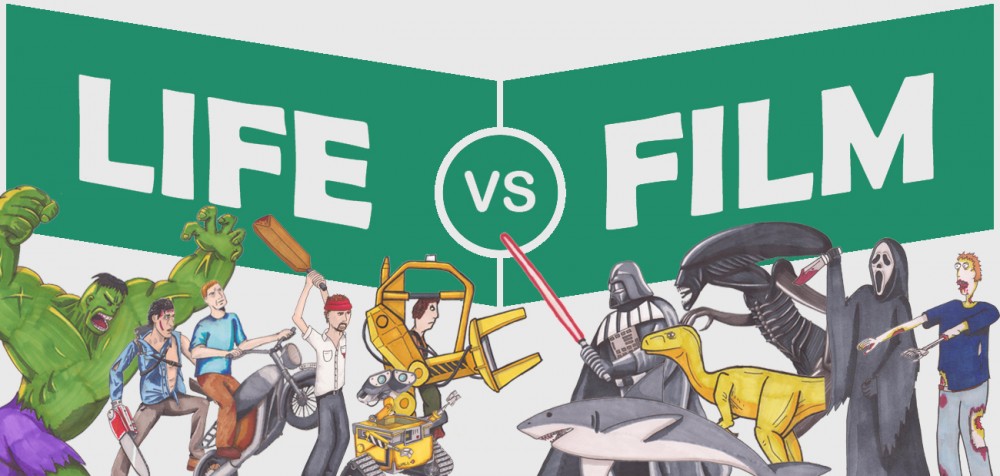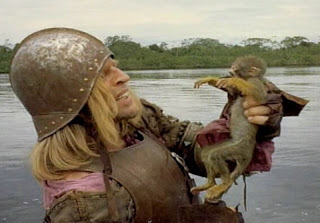 As opening shots go, footage of dead, decomposed babies and children, their faces contorted into richtuses of terror and howls of pain is probably one of the clearest projections for the tone of the ensuing film that I’ve ever come across. Couple this with slow motion shots of bats flying in the dark (used repeatedly throughout the entire film whenever director Werner Herzog takes his fancy, regardless of it’s relevance to the plot) and a woman (Isabelle Adjani) waking up screaming to said bat flying around her window and you’re left with no uncertainty that this isn’t quite your average vampire film.
As opening shots go, footage of dead, decomposed babies and children, their faces contorted into richtuses of terror and howls of pain is probably one of the clearest projections for the tone of the ensuing film that I’ve ever come across. Couple this with slow motion shots of bats flying in the dark (used repeatedly throughout the entire film whenever director Werner Herzog takes his fancy, regardless of it’s relevance to the plot) and a woman (Isabelle Adjani) waking up screaming to said bat flying around her window and you’re left with no uncertainty that this isn’t quite your average vampire film.
And that’s OK, because as I’ve discussed before, the tale of Dracula is fairly well known, even if you’ve never seen any of the many, many adaptations. This is my fourth Herzog film. I liked but was relatively underwhelmed by Rescue Dawn, couldn’t get my head around Aguirre and thought Bad Lieutenant was a good fit for Nicolas Cage’s own brand of insanity, but I understand that he has a reputation for being, well, a nutbag. That’s exactly the kind of approach you need to take with such a well versed story, and I approved of the inclusion of some new material.
The story, in case you’ve been living in a soil-filled coffin for several centuries, concerns Jonathan Harker (Bruno Ganz), who is sent to Transylvania to organise a land deal with Count Dracula (Klaus Kinski), a mysterious recluse who terrifies the locals and has an obsession with the neck of Jonathan’s fiance, Lucy (Adjani). Kinski’s Dracula is a wonderful creation, far more haunted than haunting. He is a very pitiable creature, paper-white with deformed ears, needle-sharp teeth, a bulbous bald head and rat-like claws, as much tormented by his curse as he is a danger to others. His face is often all that can be seen, with his body and black silk robe shrouded in complete darkness. During dinner, when Jonathan cuts his thumb, Dracula is unable to stop himself from stalking over and sucking upon it. The scene is rivetting and unbelievably tense, with utter terror in the eyes of Jonathan. Similarly, Jonathan waking to Dracula in his doorway, slowly advancing upon him, is downright horrifying. Kinski may not be as effective a Dracula as Max Schreck, but he’s still bloody good.
I especially appreciated the switch in focus upon Dracula’s inevitable arrival at Jonathan’s hometown of Wismar. Instead of centring merely on the havoc caused by the presence of a vampire in their society, the attention is paid more to the rats he brought with him aboard his boat, and the plague that lays the town low. I think this is new to the story, and was a nice addition in my opinion, although the group of people enjoying a meal in the village square, over-run by rats to which they are oblivious because they’ve caught the plague but are planning to enjoy themselves regardless was perhaps a bit much.
The role of Van Helsing (Walter Landengast) has been severely reduced from what I expected, but his final moments are genius, plot-wise. The best shot, however, has to be the creative use of a vampire’s innability to appear in mirrors, as Lucy sits brushing her hair, gazing at her reflection. We see in the mirror a door behind her open and close – with the obligatory ominous creak – and a bald, taloned shadow creeping up on her, until claws appear beside her face. It’s brilliant. Roland Topor is also good as Harker’s boss Renfield, doing an impression of both Peter Lorre and Pee-Wee Herman simultaneously.
Something did feel a little off with the setting though, as if the people were walking around the modern day (or the 1970s, at least) and just happened to be wearing period garb. It was a while before I could shake this feeling, and I still can’t put my finger on where it came from. Maybe the locations, especially of Wismar, felt a bit too modern in comparison to the costumes and dialects. My favourite thing about the film? The assistant director is called Remmelt Remmelts.
Choose film 7/10


